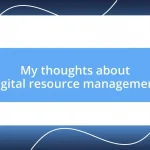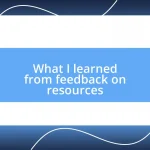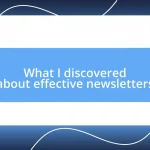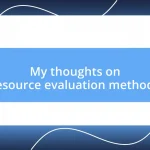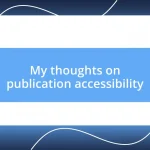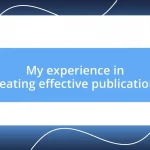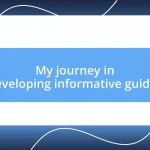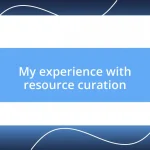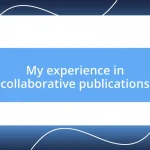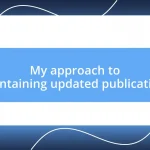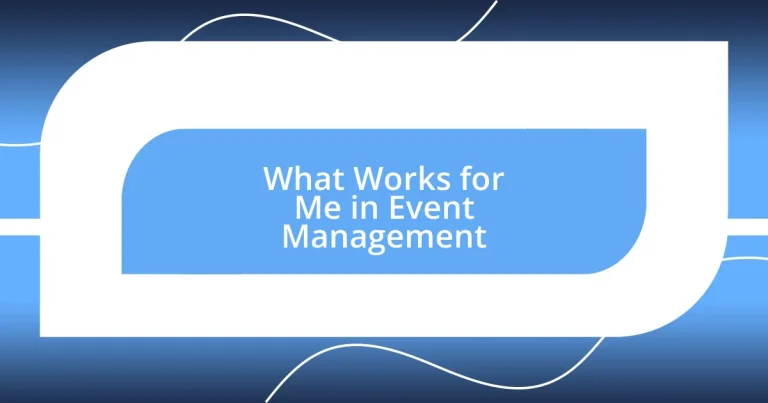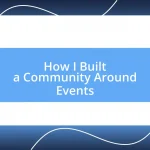Key takeaways:
- Effective communication and clear roles foster a collaborative environment, enhancing event success.
- Utilizing advanced technology and tools streamlines event planning and enhances attendee experience.
- Continuous improvement through feedback and adaptive strategies leads to more impactful future events.
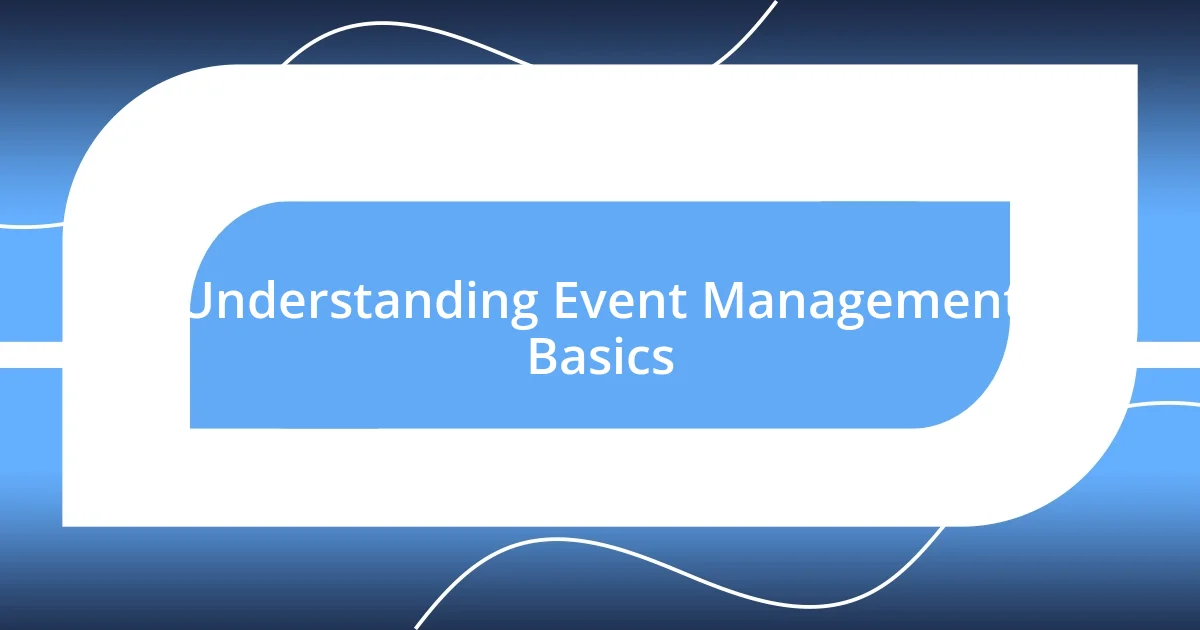
Understanding Event Management Basics
Event management is essentially the art of orchestrating various elements to create a seamless experience. Each project presents its own unique blend of challenges and excitement. I remember my first event vividly; I was overwhelmed by the logistics, yet the thrill of transforming a blank space into something magical kept me going.
Understanding the basics means grasping key components: planning, budgeting, and marketing. Have you ever considered how each area interlinks? For instance, a well-planned budget can make or break an event. I learned early on that budgeting isn’t just about cutting costs; it’s about maximizing value for attendees and sponsors alike, ensuring both leave with a lasting impression.
Moreover, I’ve found that effective communication is vital in this field. When I worked on a large conference, the importance of clear channels between team members was evident. Miscommunication can lead to chaos, and it was through prior struggles that I discovered how regular check-ins kept everyone aligned and the event on track. Without understanding these basics, it’s unlikely that an event will achieve its vision, don’t you agree?
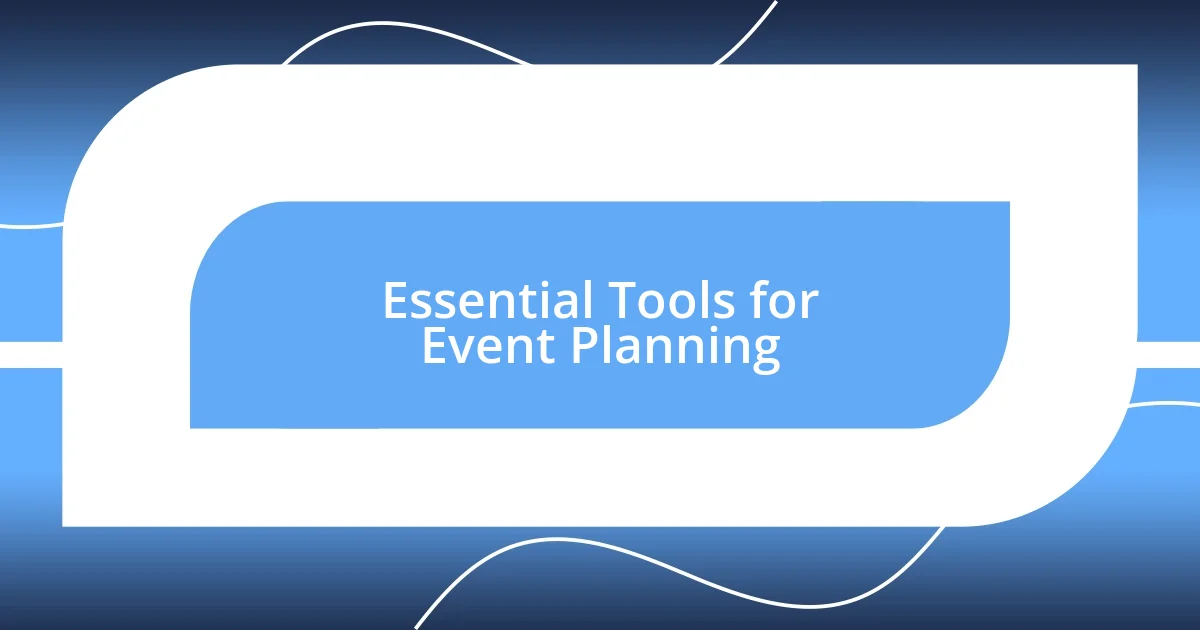
Essential Tools for Event Planning
When it comes to essential tools for event planning, I’ve found that the right technology can transform a chaotic process into a smooth journey. I remember a particular event where I relied on a dedicated event management software. It not only helped me streamline registration and ticketing but also provided real-time updates on attendee engagement, making adjustments on the fly much easier. The experience taught me that embracing technology isn’t just about efficiency; it’s about enhancing the overall experience for everyone involved.
Here are some indispensable tools that have greatly contributed to my success in event management:
- Event Management Software: Platforms like Eventbrite or Cvent enable seamless planning from registration to post-event analytics.
- Project Management Tools: Software such as Trello or Asana keeps tasks organized, ensuring nothing falls through the cracks.
- Communication Apps: Tools like Slack facilitate real-time communication among team members, reducing misunderstandings.
- Social Media Scheduling: Using tools like Hootsuite can help plan and automate your event’s marketing strategy effectively.
- Budgeting Tools: Excel or dedicated financial software assists in tracking expenses and keeping everything within budget.
Utilizing these resources has not only eased my workload but has also allowed me to focus on creating memorable experiences for attendees. Each tool plays a unique role, yet when they’re all working together, that’s when true magic happens in event planning.
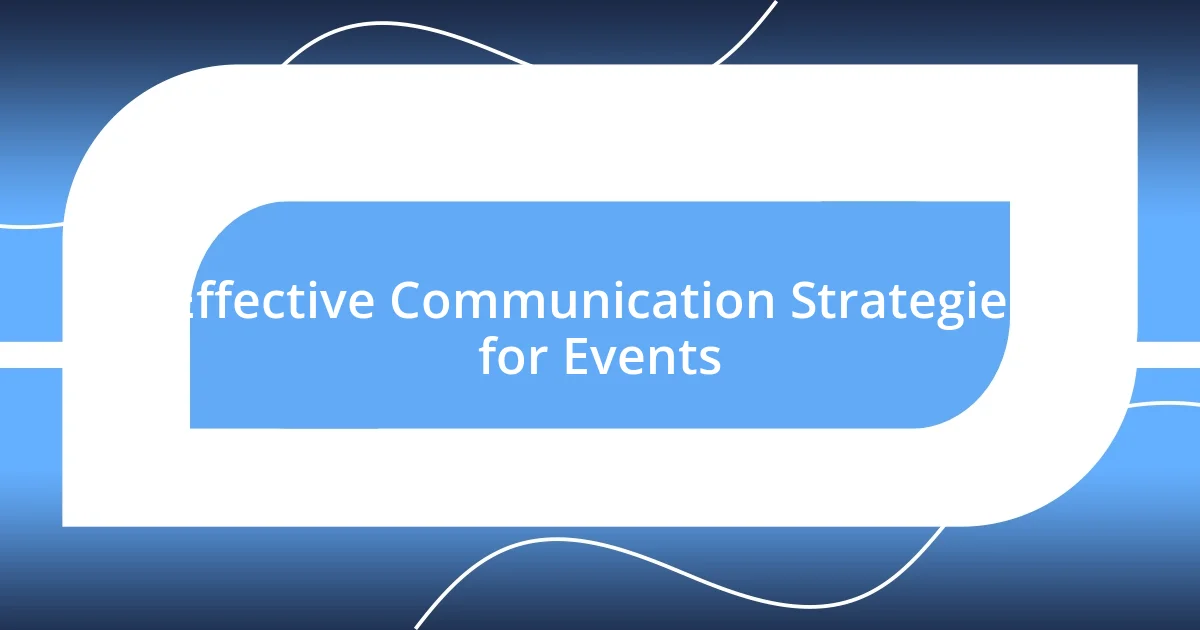
Effective Communication Strategies for Events
Effective communication strategies can make or break an event, and I’ve learned this lesson firsthand. During one particularly hectic gala, I discovered that having a centralized communication system was crucial. We had a group on a messaging platform that allowed for quick updates and file sharing, which helped keep the team on the same page. I felt a wave of relief when a last-minute catering change was communicated instantly, preventing potential confusion.
One tactic I’ve found invaluable is establishing clear roles and responsibilities within the team. By directly assigning specific points of contact for each aspect of the event, I was able to cultivate a sense of ownership among team members. This strategy not only empowered them but also drove the event’s success, elevating the overall experience. Have you ever experienced the difference clarity can make in teamwork? In my experience, when team members know their exact roles, it reduces stress and fosters collaboration, which always shines through in the final outcome.
Another communication strategy involves post-event debriefings. After every event, I gather the team to discuss what went well and what could be improved. This practice not only aids personal growth but strengthens future collaboration. Sharing both successes and challenges creates a culture of open dialogue, which I’ve found enhances team dynamics for subsequent projects. The sense of camaraderie built during these sessions is something I genuinely cherish.
| Strategy | Description |
|---|---|
| Centralized Communication | Utilizing platforms like Slack to share instant updates, preventing miscommunication during events. |
| Clearly Defined Roles | Assigning specific responsibilities to team members to empower ownership and lessen chaos. |
| Post-Event Debriefings | Conducting reflections after events to drive improvement and enhance team camaraderie. |
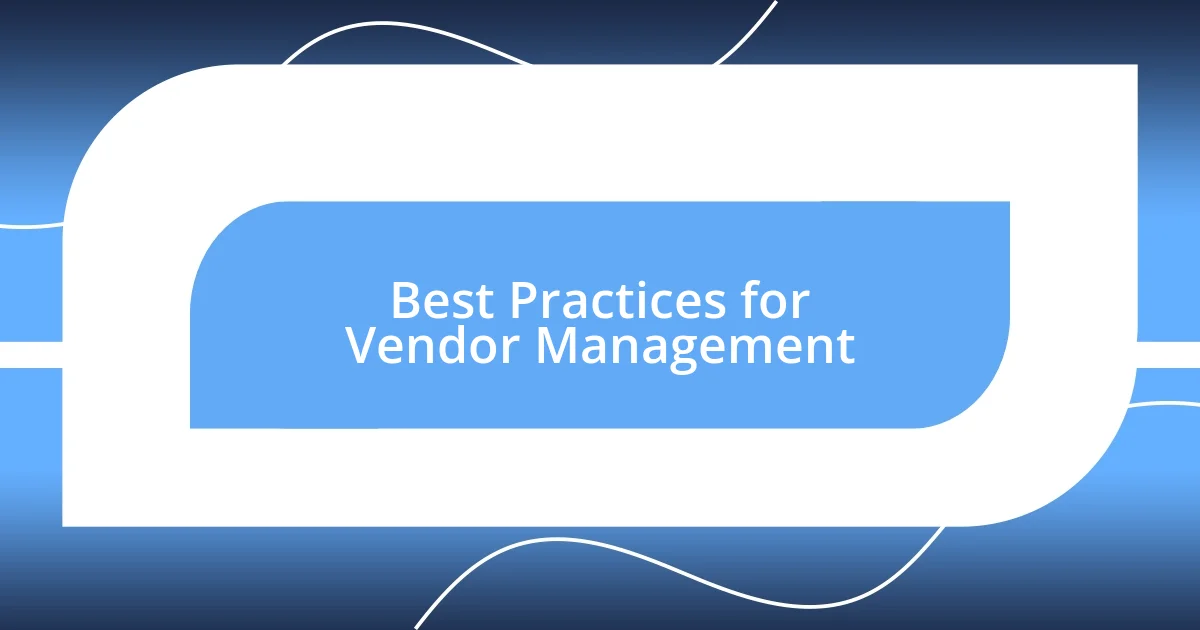
Best Practices for Vendor Management
Vendor management is a crucial piece of the event management puzzle. I’ve learned the importance of establishing strong relationships with vendors early on. A memorable instance for me was working with a catering team that delivered exquisite food, but their processes seemed a bit unorganized. After a candid conversation, they shared their challenges, allowing us to work more collaboratively. Building rapport opens doors to better communication and can make problem-solving feel like teamwork rather than a chore.
In my experience, clear expectations are key when working with vendors. I always ensure that we document every detail in contracts—from timelines to deliverables—because ambiguity breeds confusion. One time, a miscommunication about setup times led to a last-minute scramble. I remember the stress of staring at the clock while vendors were rushing to meet our needs. Since then, I’ve prioritized thorough walkthroughs with vendors before events to ensure alignment. It’s amazing how clarity can reduce stress levels on the day of the event.
Another best practice I’ve adopted is maintaining an open line of communication throughout the planning process. I often check in with vendors to update them on any changes or new ideas. For instance, when I tailored a vendor’s offerings based on attendee feedback from a previous event, they were not only receptive but excited to contribute to the next iteration. Have you ever noticed how proactive communication can transform vendor relationships into partnerships? I’ve found that when vendors feel valued and involved, they often go above and beyond, which always delights attendees and enhances the event.
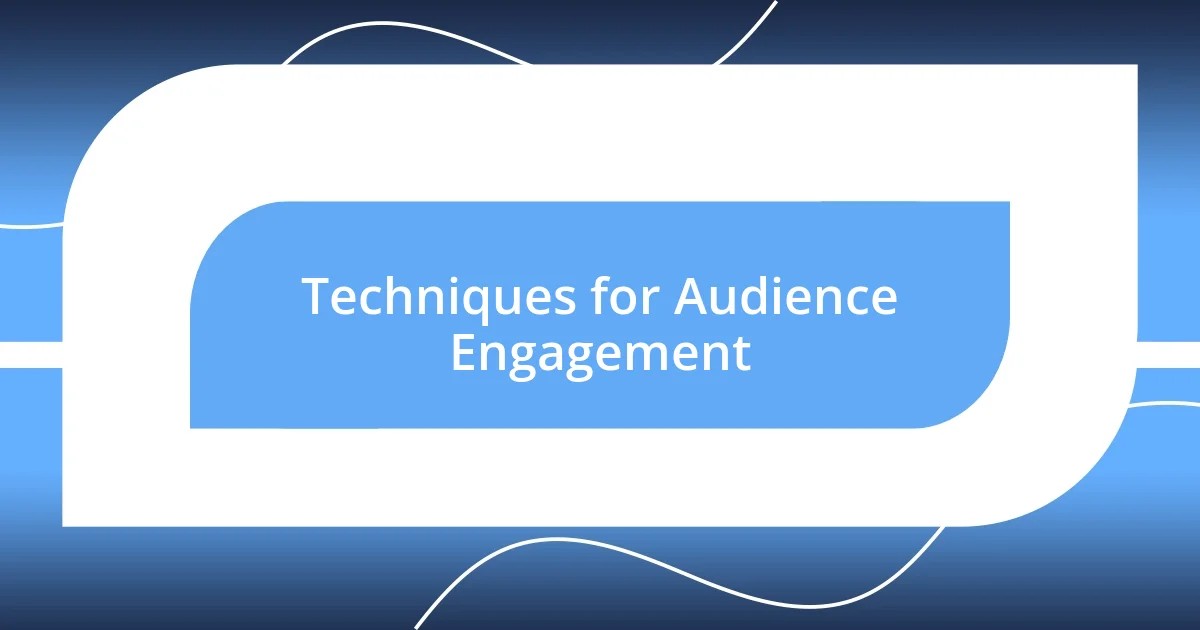
Techniques for Audience Engagement
One of the techniques I’ve found impactful for engaging an audience is incorporating interactive elements into events. For example, during a recent conference, I introduced live polling through a mobile app. Participants were not only excited to share their opinions but also felt like active contributors to the discussion. I still remember the thrill in the room when the results appeared on screen, instantly sparking animated debates among attendees. Isn’t it incredible how technology can transform a passive audience into enthusiastic participants?
Another technique revolves around storytelling. During an event, I once shared a personal anecdote about a challenge I faced in my career. It was fascinating to see how vulnerable moments resonate with attendees, creating genuine connections. Many approached me afterward, sharing their stories and reflections. This experience underscored how storytelling can turn an event from a mere presentation into a shared journey. Have you considered how your own experiences could enrich the audience’s understanding?
Lastly, creating a comfortable atmosphere is essential for audience engagement. I often set up lounge areas with casual seating during breaks. At one event, this simple change encouraged attendees to mingle, share ideas, and deepen their connections over coffee. Seeing groups animatedly discussing concepts sparked during sessions reminded me of the value of space in fostering interaction. What’s your take on the importance of environment in creating engagement? I believe it’s a cornerstone that should not be overlooked.
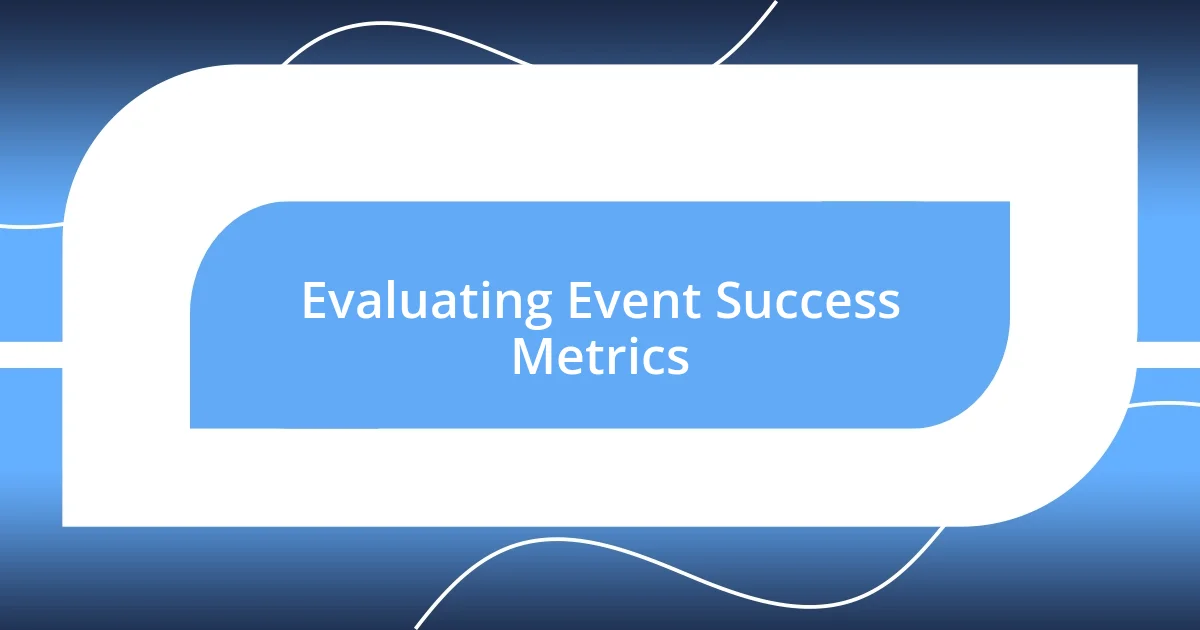
Evaluating Event Success Metrics
Evaluating event success metrics is not just about the numbers; it’s about understanding the story those numbers tell. I recall my first major event where we tracked attendance, engagement, and post-event feedback. While we were excited about high turnout, the real breakthrough came when I analyzed attendee satisfaction scores. It was then I realized that quantity doesn’t always equate to quality. Have you ever celebrated a seemingly successful turnout only to find that the experience fell short for many?
One metric I’ve come to appreciate deeply is engagement levels during the event. For instance, during an interactive workshop I led, I kept an eye on real-time reactions and participation rates. The energy in the room—and even things like body language—spoke volumes more than survey results after the fact. Seeing attendees lean in, nodding, and exchanging notes was an invaluable indicator of success that no formula could capture. Wouldn’t you agree that the vibe of the room can be as telling as the data collected afterward?
Lastly, I’ve found value in analyzing follow-up actions taken by attendees after the event. At a recent seminar, I was thrilled to see many participants signing up for additional resources we provided. It was affirming to know that our messaging resonated deeply enough that they felt compelled to learn more. Have you noticed how the ripple effect of an event can reveal its true impact over time? Reflecting on these metrics broadens my view of success—it goes beyond immediate feedback, pushing me to think about long-term engagement.
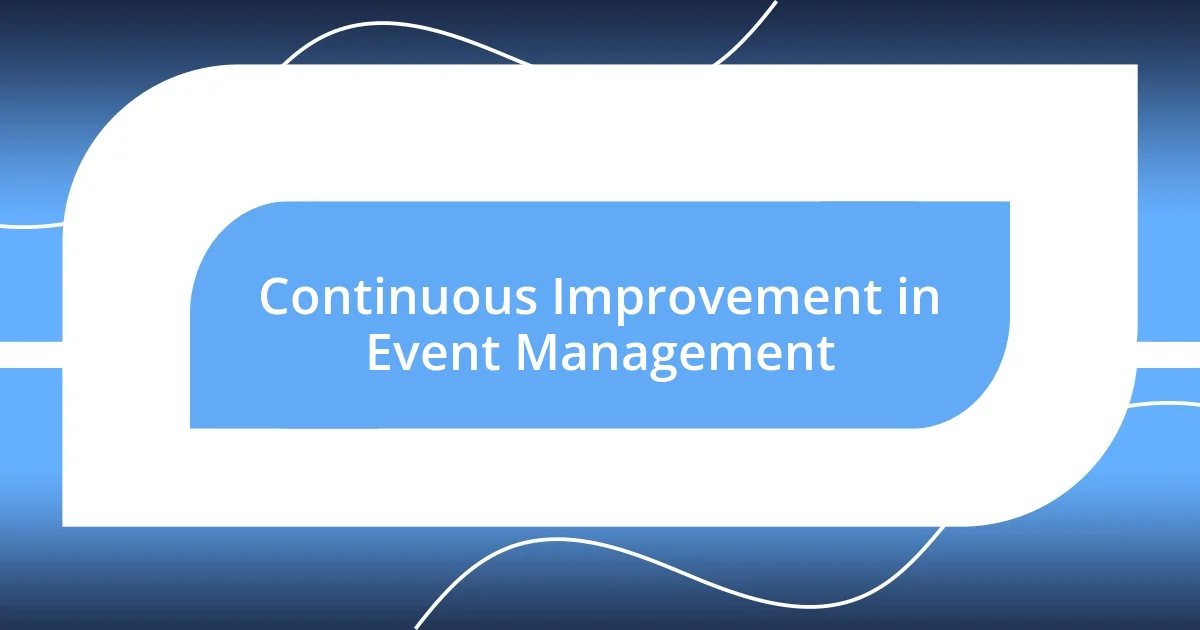
Continuous Improvement in Event Management
Continuous improvement in event management is a constant journey, one I’ve embraced wholeheartedly. During one of my events, I implemented a feedback loop that encouraged real-time input from attendees. It was enlightening to see how minor adjustments made throughout the day—like changing the order of sessions based on participant energy levels—could elevate the overall experience. Have you ever thought about how small changes, made on the fly, can have a profound impact?
In another instance, after conducting a thorough debrief with my team, we identified areas that needed tweaking for future events. One key takeaway was the pacing of our schedule. I remember feeling overwhelmed when sessions felt crammed, leaving little room for meaningful discussions. This insight prompted us to allow buffer time for Q&A, making the experience more enriching. How often do we overlook the need for breathing space in our agendas?
Taking these lessons to heart allows for a dynamic approach where every event becomes a stepping stone toward improvement. I recall a particularly challenging event where unexpected technical issues arose. Instead of viewing it as a failure, we turned it into a learning opportunity, refining our contingency plans for future gatherings. It’s striking to think about how much value can stem from setbacks—have you experienced a similar moment where adversity became a catalyst for growth?
